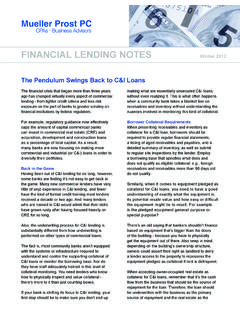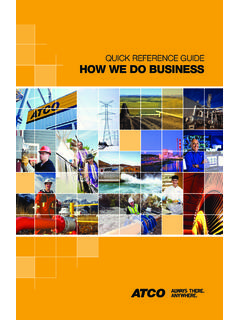Transcription of Participant Communications Shifting to An …
1 234 Benefits in BriefNews and Insights for HR Executives, CFOs and Professional Administrators Winter 2018 ERISA requires sponsors of employee benefit plans to send participants a wide range of differ-ent types of disclosures. These com-munications provide participants with comprehensive financial infor-mation about the plan, as well as event-based information. Among these disclosures are a Summary Plan Description (SPD), Summary of Material Modification (SMM), Summary Annual Report (SAR) and Summary of Benefits and Coverage (SBC). Sponsors also must provide certain documents requested in writing by participants, such as the latest Form , third-party administra-tors handle the logistics of sending out these and other employee benefit plan disclosures.
2 But this doesn t relieve you as the plan fiduciary from responsibility for understand-ing disclosure requirements and making sure they are Retirement OutcomesIn addition to ERISA-required disclo-sures, sponsors also send a variety of other Communications to plan partic-ipants. Many of these communica-tions are focused on various aspects of plan processes, such as how to enroll in the plan, how to make investment selections and other plan sponsors are tak-ing their Participant communica- Participant Communications Shifting to An Outcomes-Focused Communication Plan Benefit Plan Audit Q&AReexamine YourPayroll Controlstions a step further by focusing on how participants can achieve positive retirement outcomes.
3 These types of communication plans discuss such issues as: The projected outcomes of retire-ment savings strategies and behaviors, Future monthly retirement income amounts, The spending power of such amounts during retirement when inflation is factored in, and Successful retirement idea behind these kinds of Communications is to help partici-pants get a glimpse of what retire-ment could actually look like for them one day. By envisioning this, participants often tend to be more actively involved in planning and sticking to successful retirement saving to RetirementSuch an outcomes-focused partici-pant communication plan helps par-ticipants better relate to retirement, which can be a vague concept for many people, by showing them the rest of the story, so to of the best ways to accomplish this is to feature retirement saving suc-cess stories in your Communications .
4 When participants can see that real people just like themselves have met their retirement savings goals, it can give them some extra motivation to stick with their long-term savings Communications should also be positive, optimistic and action-oriented while reinforcing suc-cessful savings behaviors. These typi-cally include things like increasing contribution amounts regularly, mak-ing extra contributions whenever pos-Hiring ProfessionalInvestment HelpContinued on page 3A PKF North America publication with contributions from:An Allinial Global publication with contributions from:2 Benefits in Brief Winter 2018 Take a Deep DiveFollowing are a few more key areas to examine as part of your deep dive into payroll controls: Participant data is recorded in a proper and timely manner.
5 Participant forms (such as enroll-ment, rollover and deferral election forms) should be controlled and maintained for future reference. The number of plan participants should be reconciled using enroll-ment forms and census data. Timely auto-enrollment of employ-ees should be monitored using cen-sus data. Participant demographic data and deferral elections should be updated and reconciled to your company s personnel and payroll are remitted at the appropriate amount, and in the appropri-ate period, on a timely basis: Employer payroll records should be compared with contribution accuracy is crucial when managing employee benefit and retirement plans.
6 Errors and mis-takes can lead to inaccurate deferral amounts, delayed enrollment dates and incorrect calculation of eligible compensation, to name just a few of the data that s used to manage retirement plans originates with your company s payroll. There-fore, it s critical to ensure that com-plete and accurate payroll records are maintained internally and that proper controls are in place to ensure the security of this should also ensure that this information and any changes to it are communicated to your payroll pro-cessor in a timely manner. Finally, make sure that all plan provisions have also been communicated to the payroll Comprehensive Personnel FilesA complete file should be prepared for all new employees, and current and complete personnel files with data for all employees should be kept in one area.
7 The following items should be included in each employ-ee s personnel file and maintained by an individual who does not have payroll preparation responsibilities: Signed and dated employment application Form I-9 Employment Eligibility Verification Date of hire Approved pay rate (updated as changes occur) Signed W-4 form Insurance and other benefits elec-tion forms Beneficiary designation form Employee s current address and phone number Next of kin s or other emergency contact s name, address and cur-rent daytime phone number Employee evaluations Benefit election forms for termi-nated or retired employees Payroll Controls Is Your Payroll Data Accurate and Secure?
8 Clerical accuracy of contribution remittance schedules should be checked. Contribution remittance schedules should be reconciled to the cash receipts ledger and bank deposits. Control totals for Participant and employer contributions should be maintained. Participant contributions should be remitted to the trust within DOL regulatory s also important to make sure everyone is on the same page with regard to the plan s definition of eli-gible compensation. This is an area where errors commonly occur for example, if the CFO changes the defi-nition on the plan document but doesn t tell the payroll processing Problems LaterDon t let payroll errors cause prob-lems with your employee benefit and retirement plans.
9 Make plans now to conduct a thorough review of your payroll Payroll ControlsHere are a few more payroll con-trols to examine in your review:Check W-2 forms. The totals (by form and aggregately) should be traced to payroll records by an employee with no other payroll payroll duties. The employee who prepares payroll should not also distribute paychecks or prepare direct deposit, reconcile the payroll bank account or have other personnel payroll information more frequently. Reconciliation and prep-aration of payroll data submitted to the pension administrator for calculation of required sponsor contributions should be performed on at least an annual basis, or more often if contributions are made throughout the 2018 Benefits in BriefSponsors of employee benefit plans often have questions about many aspects of benefit plan audits.
10 Here are a few of the most common plan audit questions and answers:Q: What is the purpose of an employee benefit plan audit?A: An audit provides insight into the plan sponsor s control environ-ment, which may uncover operational errors or prohibited transactions. This, in turn, may result in plan remedia-tion and corrections. Plan sponsors can also use audit results to strength-en internal controls, improve pro-cesses and fulfill their fiduciary com-pliance : What do auditors generally look at when auditing an employee benefit plan?A: Using their knowledge of the plan s nature and control environ-ment, auditors will examine such areas as Participant data; employee and employer plan contributions; plan distributions and Participant loans; plan expenses, investments and income; the valuation of plan assets; and the timeliness of plan contributions, among other : Does our plan have to be audited?



